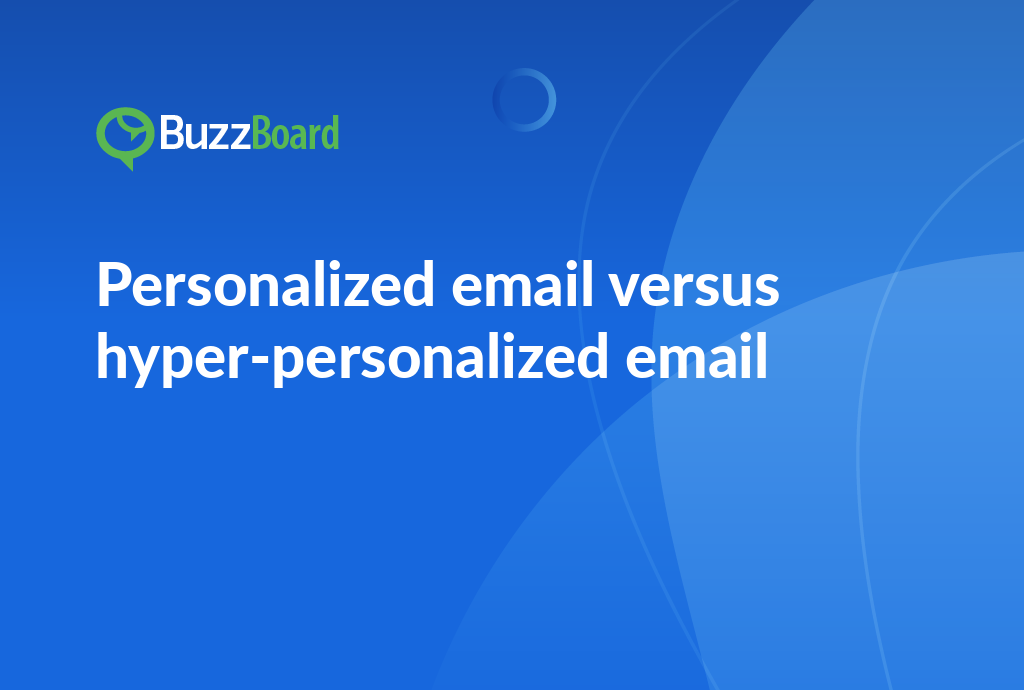Target the Right Small Businesses for Your Digital Marketing Services
Targeting the right small businesses for your digital marketing efforts is crucial for maximizing your ROI. According to a recent study, 71% of small businesses don’t have a website, and 60% don’t have a social media presence. To hit the bullseye, focus on identifying industries with a high concentration of small businesses, leveraging online directories, and utilizing social media listening tools to find potential clients. Additionally, prioritize local SEO and create targeted content that addresses the unique needs and pain points of small businesses in your niche. By following these strategies, you’ll increase your chances of attracting the right small businesses for your digital marketing services.
Understanding the Importance of Identifying the Right Small Businesses for Digital Marketing
Understanding the significance of pinpointing the right small businesses for digital marketing is paramount in crafting successful strategies. It’s important to note that not all small businesses require identical approaches; each has its unique set of challenges and benefits that need consideration.
Performing a target audience analysis is a fundamental step in identifying small businesses that are perfect candidates for digital marketing. This examination involves scrutinizing the business’ industry, audience, and competitors to gain more profound insights into market conditions. Armed with this knowledge, digital marketing agencies can tailor their strategies to ensure top-tier effectiveness and precision.
Developing buyer personas is a crucial step in crafting a successful and complex digital marketing strategy for small businesses. These comprehensive profiles serve as a roadmap for understanding the optimal customers a business aims to reach, allowing salespeople to tailor their approach to effectively resonate with the target market.
In today’s digital landscape, the “one-size-fits-all” approach is no longer effective. Instead, businesses need to focus on creating buyer personas that capture the unique characteristics, pain points, preferences, and decision-making habits of their ideal customers. This involves conducting thorough research to gather insights on demographics, firmographics, psychographics, and behavioral patterns.
By creating a detailed buyer persona, digital marketing agencies can gain a deeper understanding of their target audience, enabling them to develop bespoke marketing strategies that speak directly to their needs and concerns. This personalized approach allows businesses to build stronger connections with their customers, increasing the likelihood of conversion and driving long-term growth.
Moreover, building a robust foundation in understanding which small businesses to target is essential for revolutionizing a digital marketing approach. By focusing on the right audience, businesses can optimize their efforts, allocate resources more effectively, and deliver added value to their clients. This, in turn, can lead to improved results, increased customer satisfaction, and a competitive edge in the market.
In addition, developing buyer personas can help businesses to:
- Identify and prioritize their most valuable customers
- Develop targeted messaging and content that resonates with their audience
- Optimize their website and online presence to better serve their target market
- Create effective lead generation and conversion strategies
- Measure and track the effectiveness of their digital marketing efforts
By investing time and effort into developing buyer personas, small businesses can transform their digital marketing approach, driving better results, and delivering added value to their clients. In today’s competitive market, this level of understanding and personalization is essential for standing out and achieving success.
The Process of Performing Target Audience Analysis for Small Businesses
To excel in digital marketing for small businesses, one of the most critical steps is conducting a thorough target audience analysis. This process is essential because it enables you to gain a deep understanding of who your ideal customer is, allowing you to tailor your marketing strategies effectively and increase conversions. By doing so, you can enhance your business performance, drive growth, and ultimately achieve long-term success.
To execute a successful target audience analysis for small businesses, it’s essential to start by developing buyer personas. A buyer persona is an in-depth, semi-fictional profile of your ideal customer, which includes their demographics, behavior patterns, motivations, and goals. By creating a detailed and realistic representation of your target audience, you can gain a deeper understanding of their needs, preferences, and obstacles. This allows you to develop marketing strategies that resonate with your audience and address their pain points.
The next step is to construct the ideal customer profile for small businesses. This profile takes the buyer persona a step further by identifying what characteristics make them the perfect fit for your product or service. This requires a more comprehensive market segmentation, diving beyond basic demographics to explore elements such as decision-making processes, preferences, and purchasing behaviors. By understanding these factors, you can create targeted marketing campaigns that speak directly to your audience and increase the likelihood of conversion.
Conducting a target audience analysis is a crucial step in fine-tuning your marketing strategies to resonate with your unique target audience. The more you understand your audience, the better equipped you are to deliver content that piques their interest, fosters engagement, and boosts conversions. By analyzing your audience’s behavior, preferences, and pain points, you can create marketing messages that resonate with them and drive results.
Consistently analyzing, revamping, and personalizing your marketing strategies is crucial to achieving digital marketing success. This means regularly reviewing your target audience analysis to ensure that your marketing strategies remain aligned with their evolving needs and preferences. By staying up-to-date with your audience’s changing behaviors and preferences, you can adapt your marketing strategies to stay ahead of the competition and drive continued growth and success.
In addition to the benefits mentioned above, conducting a target audience analysis can also help small businesses:
- Develop targeted marketing campaigns that speak directly to their audience
- Create content that resonates with their audience and drives engagement
- Identify new opportunities for growth and expansion
- Stay ahead of the competition by understanding their audience’s needs and preferences
- Measure the effectiveness of their marketing strategies and make data-driven decisions
By investing time and effort into conducting a thorough target audience analysis, small businesses can gain a deeper understanding of their ideal customer and develop marketing strategies that drive results. By staying focused on their target audience and adapting to their evolving needs and preferences, small businesses can achieve long-term success and drive growth in the competitive digital marketing landscape.
The Role of Buyer Persona Development in Targeting Small Businesses for Digital Marketing
Effective targeting of small businesses for digital marketing requires a meticulous and ongoing process of developing buyer personas and conducting target audience analysis. This comprehensive approach enables marketers to create tailored marketing strategies that resonate with their ideal customers, ultimately driving business growth and success.
Buyer persona development is a crucial step in this process. It involves creating semi-fictional characterizations of your ideal customer, based on market research and data about existing customers. By incorporating demographics, behavior patterns, motivations, goals, and pain points, you can create a detailed and accurate representation of your target audience. This persona serves as a guide for all marketing efforts, helping you to pinpoint where and how to find your ideal audience in real life.
For instance, if you’re a digital marketing agency targeting small businesses in the retail industry, your buyer persona might include characteristics such as:
- Demographics: Age range 25-45, location in urban areas, and annual revenue between
500,000 and2 million - Behavior patterns: Active on social media, frequent online shoppers, and loyal to specific brands
- Motivations: Desire to increase online sales, improve customer engagement, and stay competitive in the market
- Goals: Increase website traffic, boost conversion rates, and enhance brand reputation
- Pain points: Difficulty in creating engaging content, limited resources for marketing, and struggle to measure ROI
With this buyer persona in hand, you can tailor your marketing efforts to specifically target and resonate with this audience. This might involve creating targeted social media ads, crafting blog posts that address their pain points, or developing email campaigns that speak to their motivations.
Target audience analysis, on the other hand, requires gathering and interpreting data about potential and existing customers to make informed marketing decisions. This involves analyzing customer demographics, behavior patterns, and preferences to understand what drives their purchasing decisions and how they prefer to communicate. By understanding who your customers are, what they do, why they purchase, and how they prefer to communicate, you can design and apply effective marketing strategies that speak directly to their needs and interests.
For example, if your target audience analysis reveals that your small business customers are primarily active on Facebook and Instagram, you may want to focus your social media marketing efforts on these platforms. Similarly, if your analysis shows that your customers are most likely to engage with your brand through email, you may want to prioritize email marketing campaigns.
It’s essential to continually assess and fine-tune your buyer personas and audience analysis to keep marketing efforts focused and efficient. This ongoing process necessitates regular attention to adapt to changing customer needs and market requirements. As customer preferences and behaviors evolve, your marketing strategies must evolve alongside them to remain effective.
By understanding and connecting with your ideal customers, you can create a loyal customer base that drives business growth and success. This requires a deep understanding of your target audience’s needs, preferences, and pain points, as well as the ability to adapt and evolve your marketing strategies to meet their changing needs.
Effective targeting of small businesses for digital marketing requires a comprehensive and ongoing process of developing buyer personas and conducting target audience analysis. By creating detailed and accurate representations of your ideal customers and understanding their needs, preferences, and pain points, you can create tailored marketing strategies that drive business growth and success.
How to Create the Ideal Customer Profile for Small Businesses in a Digital Marketing Context
Creating an ideal customer profile is a crucial step in developing a successful digital marketing strategy for small businesses. This process requires a thorough examination of the target audience, involving a comprehensive analysis of their demographics, behavior, attitudes, and interests. By doing so, you can gain a deeper understanding of their unique profiles, allowing you to customize your digital marketing strategies to meet their specific needs and preferences.
One essential step in creating an ideal customer profile is the development of buyer personas. A buyer persona is a semi-fictional representation of your ideal customer, including lifestyle facts, motivations, and concerns. This detailed profile helps you to better understand your target audience’s needs, pain points, and goals, enabling you to tailor your marketing efforts to resonate with them more effectively.
With well-developed buyer personas, you can segment your audience and personalize marketing efforts for each specific group. This targeted approach increases efficiency and improves customer acquisition rates, as you’re able to speak directly to the needs and concerns of each segment. By understanding the unique characteristics, behaviors, and motivations of each group, you can create tailored messaging, content, and campaigns that resonate with them on a deeper level.
An ideal customer profile typically includes a range of factors, such as:
- Industry type: What type of business do they operate in? Are they a service-based business or a product-based business?
- Size: What is the size of the business? Are they a small startup or a larger established company?
- Geographic location: Where are they located? Are they based in a specific region or country?
- Purchasing power: What is their budget for digital marketing services? Are they willing to invest in high-end solutions or are they looking for more affordable options?
- Job function: What role do they play in the business? Are they the decision-maker or do they report to someone else?
- Goals and challenges: What are their goals and challenges? Are they looking to increase brand awareness, drive website traffic, or generate leads?
By considering these factors and others, you can create a comprehensive ideal customer profile that guides your digital marketing efforts. This profile serves as a roadmap for your marketing strategy, ensuring that you’re targeting the right audience with the right message, at the right time.
The benefits of creating an ideal customer profile are numerous. By understanding your target audience’s needs, preferences, and behaviors, you can:
- Develop targeted marketing campaigns that resonate with your audience
- Create content that speaks directly to their needs and concerns
- Optimize your website and user experience to better serve your audience
- Improve customer acquisition rates and conversion rates
- Increase customer loyalty and retention
- Enhance your brand reputation and credibility
Creating an ideal customer profile is a critical step in developing a successful digital marketing strategy for small businesses. By taking the time to understand your target audience’s demographics, behavior, attitudes, and interests, you can create a customized marketing approach that resonates with them on a deeper level. Remember, the deeper your understanding of your target audience and buyer personas, the more effective your digital marketing strategies will be.
Case Studies and Examples of Successful Digital Marketing Strategies Targeting Small Businesses
The digital landscape has undergone a profound transformation, and small businesses are no exception. In today’s digital age, understanding how to effectively target these entities for digital marketing has become a crucial skill for salespeople at digital marketing agencies. By developing a deep understanding of the needs, challenges, and behaviors of small businesses, digital marketing agencies can create tailored marketing strategies that resonate with their target audience and drive meaningful results.
One effective approach to targeting small businesses is through the strategic development of buyer personas. This involves creating detailed profiles of ideal customers, including their demographics, pain points, goals, and behaviors. By doing so, digital marketing agencies can gain a deeper understanding of the needs and challenges faced by small businesses, and tailor their services to meet those needs.
HubSpot, a well-known inbound marketing and sales platform, is a prime example of the effectiveness of buyer persona development. By creating a persona for small businesses, they were able to chart the customer journey, identify key pain points, and develop targeted marketing strategies that addressed those needs. This approach enabled them to build trust and rapport with their target audience, and ultimately drive business growth.
Another key strategy for targeting small businesses is through target audience analysis. This involves conducting thorough research to identify specific industries, sectors, or niches that align with the agency’s services and expertise. By focusing on a specific target audience, digital marketing agencies can develop a deeper understanding of their needs, challenges, and behaviors, and create targeted marketing campaigns that resonate with them.
LoSasso Integrated Marketing is a prime example of the effectiveness of target audience analysis. By identifying a niche within the heavy equipment industry, they were able to focus their attention on small businesses operating in that sector, and develop targeted marketing strategies that addressed their unique needs and challenges.
Creating an ideal customer profile for small businesses is a crucial step in developing effective digital marketing strategies. By doing so, digital marketing agencies can gain a deeper understanding of their target audience, identify key pain points and opportunities, and develop targeted marketing campaigns that drive meaningful results.
Targeting small businesses for digital marketing requires a deep understanding of their needs, challenges, and behaviors. By developing buyer personas, conducting target audience analysis, and creating ideal customer profiles, digital marketing agencies can create tailored marketing strategies that resonate with their target audience and drive business growth. By adopting these strategies, digital marketing agencies can build trust and rapport with small businesses, and establish themselves as trusted partners in their marketing and sales efforts.
Conclusion
Targeting the right small businesses for your digital marketing efforts is crucial for achieving success. By understanding the characteristics of small businesses that are most likely to benefit from your services, you can tailor your approach to resonate with them and increase your chances of winning their business. This includes identifying industries and niches that are ripe for digital transformation, understanding the pain points and challenges that small businesses face, and leveraging data and analytics to identify the most promising targets.
By following the strategies outlined in this article, you can hit the bullseye and effectively target the right small businesses for your digital marketing efforts. This includes using online directories and databases to identify potential clients, leveraging social media and online communities to build relationships and establish credibility, and creating targeted content and messaging that speaks directly to the needs and concerns of small business owners.
Ultimately, the key to success lies in being able to demonstrate the value and ROI of your digital marketing services to small business owners, and showing them how your solutions can help them achieve their goals and overcome the challenges they face. By doing so, you can build trust and credibility with your target audience, and establish yourself as a trusted partner for their digital marketing needs.








